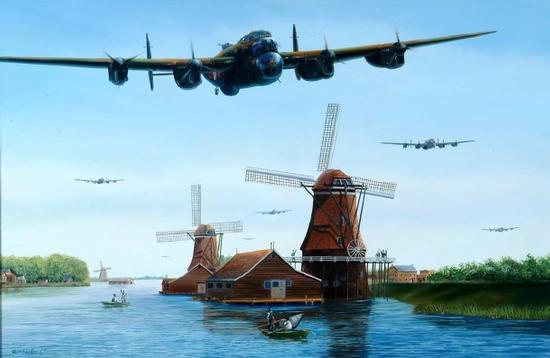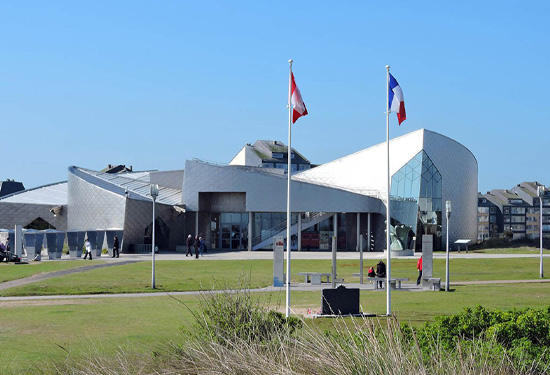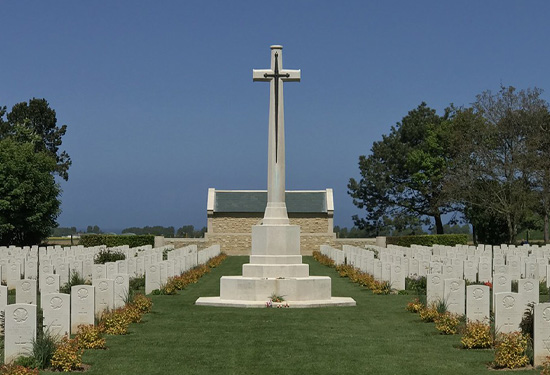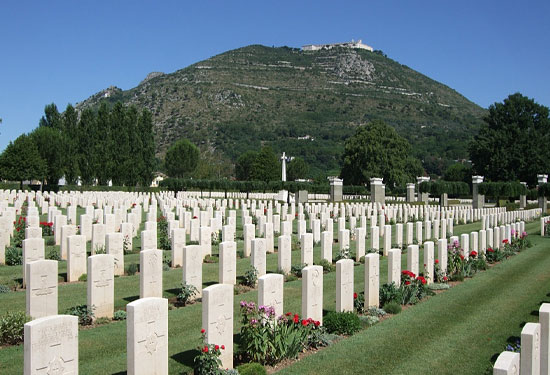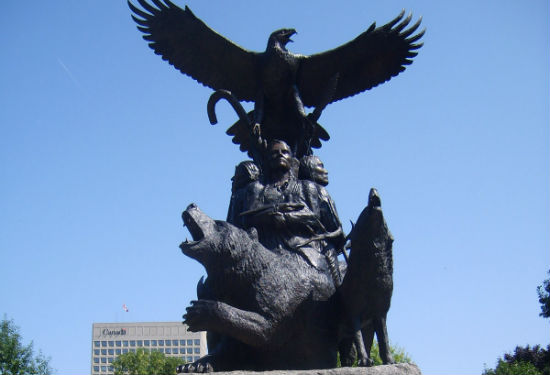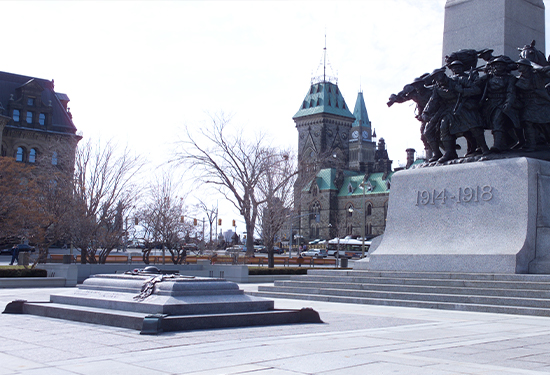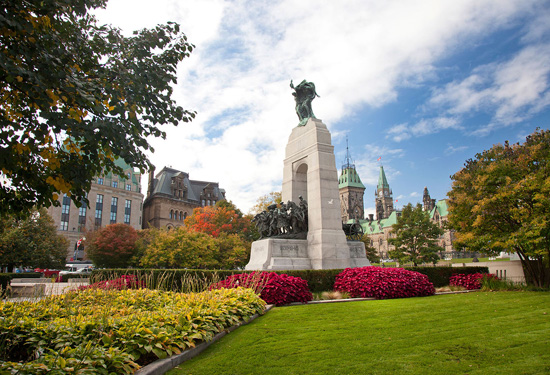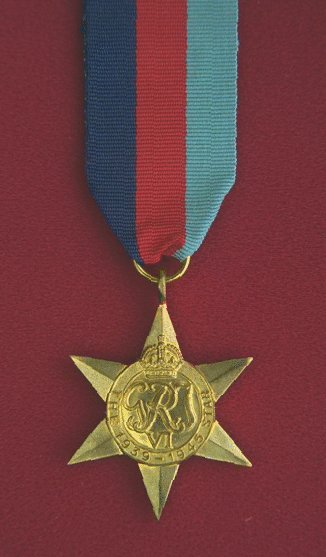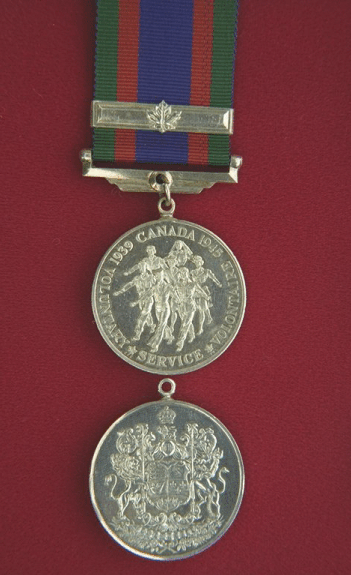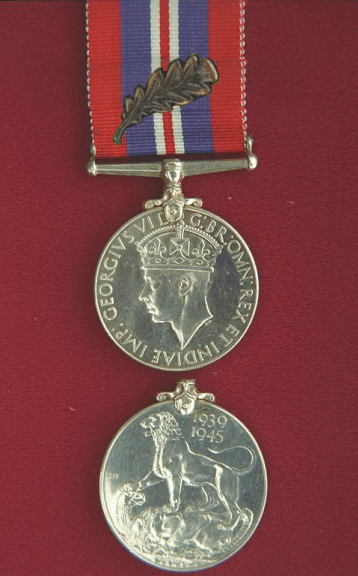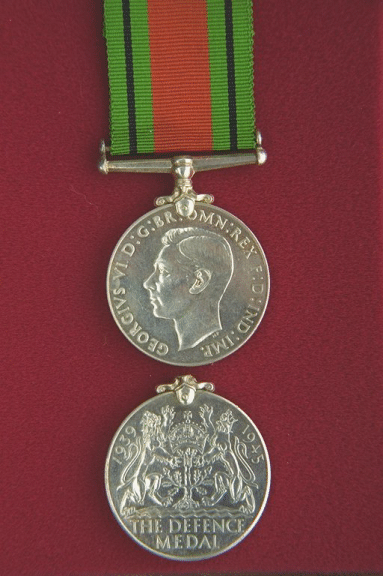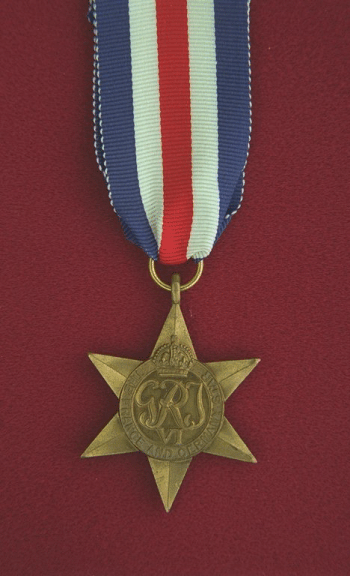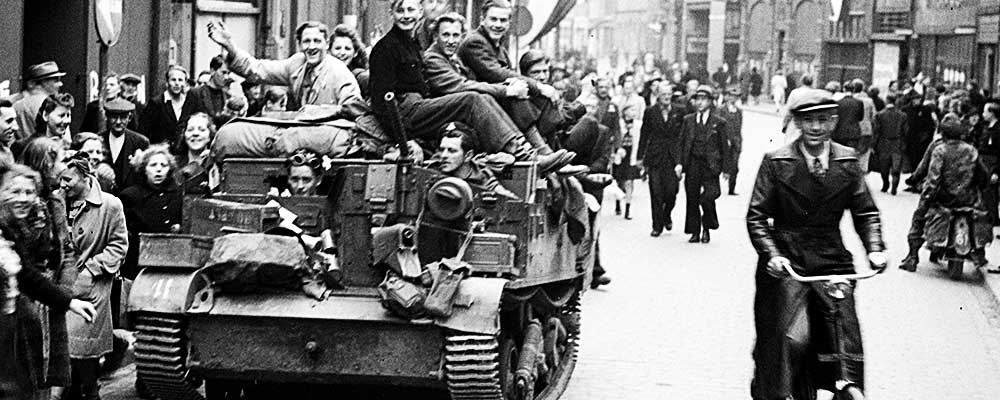
Liberation of the Netherlands
Town by town, canal by canal, Canadian soldiers pushed back the occupying German forces in the Netherlands.
September 1944 – April 1945
Second World War
Table of contents
Section 1
Section 2
Section 3
- The Final Phase: Securing Northwest Europe
- Onward to Germany
- The two Canadian corps unite
- The Northeastern Netherlands
- The Western Netherlands
- Truce and liberation
- Air and sea support
- The Commonwealth War Graves Commission
- Eternal commemoration
- Places of beauty
- Individual and equal
- Remembering their sacrifice
Section 4
Classroom materials
Introduction
The liberation of the Netherlands, from September 1944 to April 1945, played a key role in the culmination of the Second World War, as the Allied forces closed in on Germany from all sides. The First Canadian Army played a major role in the liberation of the Dutch people who had suffered terrible hunger and hardship under the increasingly desperate German occupiers.
The First Canadian Army also played a leading role in opening Belgium and the Netherlands' Scheldt estuary (tidal river), gateway to the port of Antwerp. Access to this port was essential to maintain supply lines to the Allied armies as they continued their push toward Germany to defeat Adolf Hitler's forces and free Western Europe from four years of Nazi occupation which had begun in April 1940.

Army truck loaded with evacuees. Bicycles which are prize possessions, can be seen hanging from the back of the truck 20 Nov. 1944 / Nijmegen, Netherlands. Credit: Library and Archives Canada/PA-140430
Allied offensives of 1945
Following the conclusion of the Battle of the Scheldt in November 1944, winter brought a period of reduced fighting in anticipation of the push over the Rhine River in the new year. When the new Allied offensives began in 1945, the First Canadian Army helped liberate the northeastern and western Netherlands, until the German Army officially surrendered in early May.
First Canadian Army
Under the command of General Henry Duncan Graham (Harry) Crerar, the First Canadian Army was international in character. In addition to the 2nd Canadian Corps (which included the 2nd and 3rd Canadian Infantry Divisions, and the 4th Canadian Armoured Division), the 1st British Corps, and the 1st Polish Armoured Division, at various times American, Belgian, and Dutch soldiers were also included as units. The First Canadian Army in northwestern Europe during the final phases of the war was a powerful force, the largest army that had ever been under the control of a Canadian general. The strength of this army ranged from approximately 105,000 to 175,000 Canadian soldiers to anywhere from 200,000 to over 450,000 when including the soldiers from other nations.
More than 7,600 Canadians died in the eight-month campaign to liberate the Netherlands, a tremendous sacrifice in the cause of freedom.

Private W.R. Van Herne of the Calgary Highlanders receiving an injection in his wounded thigh from Privates G.M. Goderre and H. Couture 1 Nov. 1944 / Beveland Peninsula, Netherlands. Credit: Ken Bell / Canada. Dept. of National Defence / Library and Archives Canada / PA-131260.
The Road to the Netherlands
The Allied forces, including the 3rd Canadian Infantry Division, and the 2nd Canadian Armoured Brigade of the First Canadian Army, landed on the beaches of Normandy, France on D-Day, June 6, 1944. As the armies progressed further inland, the First Canadian Army engaged in bitter fighting at Caen and Falaise. Once the Battle of Normandy was won on August 25, 1944, the First Canadian Army was assigned the task of clearing the coastal areas and opening the English Channel ports for supplies vital to the Allied advance.
Clearing the coast
Fighting on the left flank of the Allied forces, the First Canadian Army pushed rapidly eastward through France towards Belgium. September began with the 2nd Canadian Infantry Division being welcomed to Dieppe. The 2nd Canadian Corps left a number of units to guard the heavily defended ports and pushed into Belgium, reaching Ostend, Bruges and Ghent by the middle of the month. By October 1, the port cities of Boulogne, Cap Gris Nez, Calais, and Dunkirk were all under Allied control. The 2nd Canadian Corps had also captured the launching sites of German rockets and put an end to their attacks on southern England.

Troopers of a Canadian armoured brigade getting out of a new General Motors Canada fifteen-hundred weight armoured truck near Nijmegen. December 5, 1944 / Nijmegen, Netherlands (vicinity). Credit: Barney J. Gloster/Canada. Dept. of National Defence/Library and Archives Canada/PA-177591
Operation Market Garden
Meanwhile, the Second British Army had pushed forward into the southern Netherlands. On September 17, three British and American airborne divisions, as well as a brigade of Polish parachute troops, attempted to land behind enemy lines at Nijmegen, Eindhoven and Arnhem. Code-named Operation Market Garden, the mission's objective was to seize a bridge over the Rhine River at Arnhem. The operation failed, with 1,400 of a total force of 35,000 killed and more than 6,000 taken prisoner. Any hope for a speedy end to the war appeared to be dashed.
Port of Antwerp
Capturing a major port now became a top priority as establishing adequate supply lines for the winter now became of paramount importance. The Second British Army had seized the port of Antwerp with its installations virtually intact. As Europe's second-largest port, Antwerp and its 45 kilometres of docks was an ideal landing ground for supplies for the continuing war effort. In fact, the opening of the port of Antwerp was essential, since at this point the main supply lines still ran back to Normandy.
However, Germans occupiers still controlled the Scheldt river which connected the port of Antwerp to the North Sea. As long as the Germans held control of the sea approaches and the long winding estuary, Allied shipping to the port would be impossible. The mere occupation of Antwerp was not enough - all the lands surrounding the Scheldt would have to be liberated first.
The Battle of the Scheldt
The task of liberating the Scheldt was entrusted to the First Canadian Army, under the command of Lieutenant-General Guy Simonds (in place of General Crerar, who had returned to England because of severe illness).
The unique geography of the area made the First Canadian Army's challenge even more daunting. North of the estuary lay South Beveland. Beyond South Beveland lay the island of Walcheren, which had been fortified into a powerful German stronghold. The south bank of the estuary was flat floodlands enclosed by dykes, known as "polder country". It was below sea level and well-suited to defence.

Personnel of the Royal Hamilton Light Infantry riding in Universal Carrier 27 Oct. 1944 / Krabbendijke, Netherlands. Credit: Ken Bell/Canada. Dept. of National Defence/Library and Archives Canada/PA-138420
A four-phased plan
The plan for opening the estuary involved four main operations. The first was to clear the area north of Antwerp and secure access to South Beveland. The second was to clear the Breskens "pocket" behind the Leopold Canal, and the third was the capture of South Beveland. The final phase would be the capture of Walcheren Island. On October 2, the 2nd Canadian Infantry Division began its advance north of Antwerp, while the 3rd Canadian Infantry Division, supported by the 4th Canadian Armoured Division, began the assault over the Leopold Canal. In both areas the fighting was fierce. The well-entrenched German forces made it difficult for the Allied forces to advance.
The 2nd Canadian Infantry Division, advancing north to close the eastern end of South Beveland, made good progress against the enemy paratroopers who were barring the way. Casualties were heavy as Canadian troops attacked over open flooded ground, but by October 16 they had seized the town of Woensdrecht at the entrance to South Beveland.
Securing access to South Beveland
At this point, the challenge and opportunity was clear to all and Field-Marshal Bernard Montgomery, overall commander of the First Canadian Army and Second British Army, issued a directive making the opening of the Scheldt estuary the top priority. To the east, the British Second Army attacked westwards to clear the Netherlands south of the Maas River. This helped secure the Scheldt region from an outside counter-attack.
Meanwhile, Lieutenant-General Simonds concentrated on the area north of South Beveland. The 4th Canadian Armoured Division, which had been engaged at the Leopold Canal, moved north of the Scheldt and drove hard for the town of Bergen-op-Zoom. By October 24, the entrance to South Beveland was breached and secured and the 2nd Canadian Division began the advance into South Beveland, assisted by an amphibious landing by the 52nd British Division. By October 31, the area was secured by the Allies.

Convoy of trucks of Allied foodstuffs being moved to German occupied territory in western Netherlands. 3 May 1945 / Wageningen, Netherlands (vicinity). Credit: Alexander M. Stirton/Canada. Dept. of National Defence/Library and Archives Canada/PA-134419 .
The Breskens Pocket
Fighting along the Scheldt's southern shore was equally fierce. Here, the 3rd Canadian Infantry Division encountered tenacious German opposition as it fought to cross the Leopold Canal and clear the Breskens pocket behind the canal. The attack began on October 6 against fierce opposition, and for three days a slender bridgehead was in constant danger of elimination. Finally, on October 9, an amphibious assault broke the enemy's hold on the canal, and the bridgehead was deepened. Troops and tanks crossed the canal and the Germans withdrew into concrete bunkers along the coast. More fighting followed, but by November 3 the south shore of the Scheldt was secured.
Capture of South Beveland
On October 24, the third phase of the battle to free the Scheldt began with the 2nd Canadian Infantry Division moving against South Beveland. The Canadians hoped to advance rapidly, by-passing opposition and seizing bridgeheads over the Beveland Canal, but they too were slowed by mines, mud and strong enemy defences.
An amphibious attack was made across the West Scheldt by the 52nd (Lowland) Division to get in behind the German's Beveland Canal defensive positions. Thus this formidable defence was outflanked and the 6th Canadian Infantry Brigade began a frontal attack in assault boats. The engineers were able to bridge the canal on the main road. With the canal line gone, the German defence crumbled and South Beveland was cleared.
Walcheren Island
This left the island of Walcheren as the last obstacle to securing the port of Antwerp for Allied use. However, the Germans had fortified their position on the island and the only land approach was the long narrow causeway from South Beveland. To make matters worse, the flats that surrounded this causeway were too saturated with sea water for movement on foot but with too little water for an assault in storm boats.
The island was attacked from three directions: across the causeway from the east, across the Scheldt from the south, and from the sea. To hamper German defence, the island's dykes were breached by heavy Royal Air Force bombing, which flooded the central area and allowed the use of amphibious vehicles.

Spr. M.G. Ougler, Second Battalion Canadian Engineers, putting the finishing touches to one of the two new bridges built by the Canadian Engineers. 28 May 1945 / Zutphen, Netherlands. Credit: Canada. Dept. of National Defence/Library and Archives Canada /PA-135997
Opposition ends
The Canadians attacked the causeway on October 31 and, after a costly struggle, established a foothold. Then, in conjunction with the waterborne attacks, the 52nd British Division continued the advance. On November 6, the island's capital Middelburg was secured, and by November 8 all enemy opposition ended.
Meanwhile, the 4th Canadian Armoured Division had pushed eastward past Bergen-op-Zoom to St. Philipsland where it sank several German vessels in Zijpe harbour.
Supply line secured
Thus, with the approaches to Antwerp free and the country up to the Maas River cleared, the Battle of the Scheldt was over and the crucial supply line, essential to fuel the allied advance to liberate Europe, was secured. The channel was cleared of mines and, on November 28, the first convoy entered the port of Antwerp, led by the Canadian-built freighter Fort Cataraqui.
The Battle of the Scheldt exacted a heavy toll on the First Canadian Army. Between October 1 and November 8, 1944, the First Canadian Army suffered 12,873 casualties (killed, wounded, or missing), 6,367 of whom were Canadians.
The Rhineland Campaign
Following the Battle of the Scheldt, the Canadians were given the responsibility of holding the line along the Maas River and the Nijmegen salient (a salient is a projection into enemy territory). The Canadian front ran from the German frontier south of Nijmegen to Dunkirk in France on the North Sea coast, a distance of over 360 kilometres.
This was a largely static period of three months, spent planning and preparing for the spring offensive. Still, some sharp clashes took place. There was an unexpectedly difficult struggle against German paratroopers at Kapelsche Veer, and the alarms and movements resulting from a German offensive in the Ardennes region of Belgium reinforced the need for constant vigilance.

Sergeant E.F. Offord (Ottawa, Ont.) piling empty shell cartridges from previous barrage 23 Oct. 1944 / Ossendrecht, Netherlands. Credit: Ken Bell/Canada. Dept. of National Defence/Library and Archives Canada/PA-143928
The great offensive
Then, in February 1945, the Allies launched the great offensive to drive the enemy back over the Rhine and bring about Germany's final defeat.
The first phase of the campaign began in the north, where Field-Marshal Montgomery commanded the Ninth U.S. Army as well as his British and Canadian forces. There were two formidable thrusts. The First Canadian Army advanced from the Nijmegen salient southeastward to clear the corridor between the Rhine and the Maas rivers, while the Ninth U.S. Army drove northeastward to converge with the Canadians on the Rhine opposite Wesel.
Operation Veritable
The First Canadian Army, under General Crerar, was strengthened by the addition of Allied formations, which made it the largest army a Canadian officer had ever commanded in action. Their objective was to clear the great Reichswald Forest, break through the Siegfried Line, clear the Hochwald Forest defences, and close the area up to the Rhine River.
Under the code name "Veritable", the offensive was launched on February 8, preceded by a crushing air and artillery attack on the enemy positions. But progress was not easy. The advance was hampered by mud and flooded ground, and at times troops floundered through water one metre deep. Moreover, the American drive from the south was delayed because of flooding and the enemy was able to reinforce their positions.
“The Water Rats”
Nevertheless, the outer defences of the Siegfried Line fell and, far on the left, the "water rats" of the 3rd Canadian Infantry Division, skilled in amphibious operations after the Scheldt, made significant gains across flooded terrain. Then, in a difficult advance through the pine forest of the Reichswald and the water-logged countryside, the British and Canadian soldiers fought their way forward. On February 21, they cracked the vaunted Siegfried Line.
The formidable defences of the Hochwald Forest and Balberger heights still barred the way to the Rhine. The Hochwald was taken in an agonizing repetition of the Reichswald battle. It was here that two Canadians, Sergeant Aubrey Cosens and Major F.A. Tilston, were awarded the Victoria Cross for their gallantry and courage.

"D" Troops of the Black Watch of Canada crossing the Regge River near Ommen, Netherlands. 10 April 1945. Photo: Dan Guravich/Canada. Dept. of National Defence/Library and Archives Canada/PA 114596
Hochwald and the Rhine
Major Tilston earned the Victoria Cross for personally leading his company in an assault through intense enemy fire on the Hochwald defensive line. Despite being seriously injured, he courageously led his troops, kept them supplied with ammunition, cleared German gun positions and engaged in hand-to-hand fighting to ensure his company was successful in conducting this important task.
Opposition resistance continues
Sergeant Cosens earned his Victoria Cross for his actions in a battle to push the enemy from a small village. He assumed command of his battered platoon and personally cleared the German defenders from three buildings in the midst of intense enemy fire, killing or taking prisoner at least 40 Germans before being killed by a sniper. The Americans were now also making progress from the south. Resistance continued until March 10 when the enemy blew up the bridges of the Wesel River and withdrew to the east bank of the Rhine.
During this month of fighting, the First Canadian Army suffered heavy casualties—15,634 killed, wounded or missing in action, including 5,304 Canadians. But they had gained control of the banks of the Rhine, which marked the last major line of German defence.
The Final Phase: Securing Northwest Europe
The way was now clear for the final phase of the campaign in northwest Europe. On March 23, Field Marshal Montgomery's Allied forces began the assault across the Rhine. Although the First Canadian Army did not take part in the crossings, the troops of the 9th Canadian Infantry Brigade, under British command, participated in the crossing of the Rhine at Rees. Also, the 1st Canadian Parachute Battalion, still with the 6th Airborne Division, dropped successfully east of the river near Wesel. In this operation a Canadian medical orderly, F.G. Topham, earned the Victoria Cross for his heroic care of a wounded man. Several days later the 3rd Canadian Infantry Division crossed the Rhine and fought its way to Emmerich.
Onward to Germany
With the Rhine River behind them, the Allied forces could now exploit their great advantage in numbers and press forward into Germany. On the eastern front the Russians were approaching Vienna and were ready to advance over the Oder River towards Berlin.
The First Canadian Army's role in this period was to open up the supply route to the north through Arnhem, in the Netherlands, and then to clear the northeastern part of the country, the coastal belt of Germany eastward to the Elbe River, and western Holland.

Arrival of English and Canadian troops at station 31 Dec. 1944 / Oisterwijk, Netherlands. Credit: Canada. Dept. of National Defence /Library and Archives Canada/PA-138301
The two Canadian corps unite
This time the First Canadian Army was more completely Canadian than ever before. The 1st Canadian Corps, which had been fighting since the summer of 1943 in Italy, transferred to northwest Europe. Two Canadian army corps were fighting side by side for the first time in history. The 2nd Canadian Corps was to clear the northeastern part of the Netherlands and the German coast, while the 1st Canadian Corps was to root out the Germans remaining in the western Netherlands north of the Maas River.
The Northeastern Netherlands
The 2nd Canadian Corps' northern drive rapidly gained momentum. As the troops crossed into the Netherlands they were greeted enthusiastically by the liberated Dutch people.
On the right, Major-General Vokes' 4th Canadian Armoured Division crossed the Twente Canal and captured Almelo on April 5, before curving eastward to re-enter Germany. In the centre, the 2nd Canadian Division crossed the Schipbeck Canal and advanced in a virtually straight line to Groningen in the northern Netherlands, which they reached on April 16. The 3rd Canadian Division, on the Corps' left flank, was charged with clearing the area adjoining the Ijssel River and after several days of stiff fighting occupied the historic town of Zutphen. Then, pushing forward, they captured Deventer, Zwolle and Leeuwarden and reached the North Sea on April 18.
The operations of the 2nd Canadian Corps were then extended from the eastern Netherlands into western Germany. The 4th Canadian Division crossed the Ems River at Meppen and, combined with the 1st Polish Armoured Division, made advances on Emden, Wilhelmshaven and Oldenburg. The 3rd Canadian Division also moved on Emden, while the 2nd Canadian Division advanced from Groningen to the area of Oldenburg.
The Western Netherlands
In the western Netherlands, the 1st Canadian Corps, comprising the 1st Canadian Infantry Division and the 5th Canadian Armoured Division under the command of Lieutenant-General Charles Foulkes, was responsible for the liberation of the area north of the Maas River. This region includes the major cities of Amsterdam, Rotterdam and The Hague, where the people were at the end of their endurance from the misery and starvation that had accompanied the "Hunger Winter." Food supplies in the cities were exhausted, fuel had run out almost entirely, and transportation was virtually non-existent. Thousands of men, women, and children had perished.
An assault on Arnhem began on April 12, and, after two days of intense house-to-house fighting, the town was liberated. The 5th Canadian Armoured Division then dashed northward to the Ljsselmeer River, some 50 kilometres away, to cut off the enemy forces in Apeldoorn facing the 1st Canadian Division. The Canadians liberated Apeldoorn on April 17.

Dutch civilians and Canadian Army troops celebrating the Liberation. 7 May 1945 / Utrecht, Netherlands. Credit: Alexander M. Stirton/Canada. Dept. of National Defence/Library and Archives Canada/PA-134377.
Truce and liberation
By April 28, the Germans in western Holland had been driven back to a line running roughly between Wageningen through Amersfoort to the North Sea, known as the Grebbe Line. On that day a truce was arranged, fighting ceased in western Holland, and several days later food supplies began to move through for the starving people. No part of Western Europe was liberated at a more vital moment than the west of the Netherlands, and the Canadian soldiers who contributed so immensely to that liberation were cheered and greeted with great joy.
On April 25, the American and Russian troops met on the Elbe River. A few days later Hitler committed suicide in Berlin, where he had been encircled by the Russians. The war ended a week later. On May 5, in the village of Wageningen, General Foulkes accepted the surrender of the German troops in the Netherlands. General Simonds of the 2nd Canadian Corps, in Bad Zwischenahn, did the same on his front. The formal German surrender was signed on May 7, 1945, at Reims in France.
Air and sea support
The campaign in northwest Europe took eleven months and could not have succeeded without the support of Allied naval and air forces. The navies kept the sea lanes open for munitions, supplies and reinforcements, while overhead the air forces cleared the skies and engaged in dangerous bombing missions.

Royal Canadian Army Service Corps (R.C.A.S.C.) personnel of the 4th Canadian Armoured Division examining a captured German dummy aircraft. October 28, 1944 / Huijbergen, Netherlands. Credit: Harold G. Aikman/Canada. Dept. of National Defence/Library and Archives Canada/PA-176879
The Commonwealth War Graves Commission
The Commonwealth War Graves Commission originated as the Imperial War Graves Commission, which was incorporated by Royal Charter on May 21, 1917. A Supplemental Charter in 1940 extended its duties to include those who died in the Second World War, and another in 1960 changed its name to the present one.
Britain, Canada, Australia, New Zealand, India, and the Republic of South Africa are members of the Commission. All share in the Commission's operating costs in proportion to the number of their war dead.
Eternal commemoration
From the beginning, the Commission's sole purpose and function has been the burial and commemoration in perpetuity of the 1,695,000 war dead of the Armed Forces of the British Commonwealth and Empire who died in the First and Second World Wars. They are buried in more than 23,000 burial sites in 140 countries around the world and the names of those whose final resting places are unknown are commemorated on more than 200 memorials erected in the areas where they fought and died.
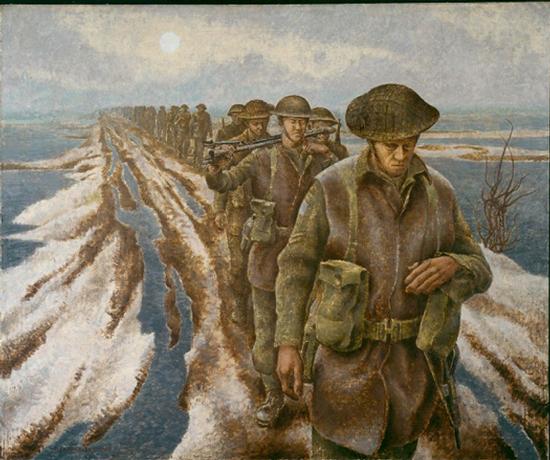
This oil painting, Infantry, near Nijmegen, Holland, created by Canadian war artist Alex Colville, depicts obviously exhausted Canadian soldiers during the fighting which liberated the Netherlands from German occupation. Credit: Captain David (Alex) Alexander Colville, c. 1946 Nijmegen, Holland, NETHERLANDS CWM 19710261-2079 © Canadian War Museum
Places of beauty
The 2,500 Commonwealth War Cemeteries throughout the world have been designed and laid out following the plans of some of the most eminent architects of the day. It is the Commission's policy that these cemeteries should be laid out to give the impression of beautiful gardens with the green of grass and foliage and the colour and scent of flowers everywhere. They are places of beauty where the peace and serenity of the atmosphere cannot fail to impress themselves upon the visitor.
Each war cemetery is marked by a large stone Cross of Sacrifice bearing on its shaft a crusader's sword of bronze, and in the larger cemeteries there is also a Stone of Remembrance, an altar-like monument bearing the words: Their Name Liveth For Evermore.
Individual and equal
One of the main principles governing the Commission's work is that of equality of sacrifice, thus each of the dead is commemorated individually by name and all are treated as equals, irrespective of rank, civilian status, race or religion.
Canada's war dead in the Netherlands are buried mainly in seven Commonwealth War Cemeteries, or are commemorated on the Groesbeek Memorial. The Canadian Agency of the Commonwealth War Graves Commission is co-located with the Department of Veterans Affairs in Ottawa, and has responsibility for some 19,000 Commonwealth war dead buried in Canada and the USA.
Remembering their sacrifice
Those who fought in the liberation of the Netherlands achieved and sacrificed much in their efforts to help bring peace and freedom to the people of Europe. These combatants were among the more than one million men and women who served in Canada's armed forces during the Second World War. More than 42,000 Canadians gave their lives in the war. Canada and the world recognize the sacrifices and achievements of all the Canadians, like those who fought in the liberation of the Netherlands, who accomplished so much and left a lasting legacy of peace.
More than 7,600 Canadians died in the eight dreadful months it took to liberate the Netherlands. They are buried in cemeteries from Adegem in Belgium, to Rheinberg in Germany.

Postcard commemorating the liberation of the Netherlands. With symbolism and humour, the artist Jan Laviesm depicted the liberation of the Netherlands by Canadian and Polish forces. When German troops in the province of Holland surrendered on May 5, 1945, the Canadians liberated the west of the country including Rotterdam, The Hague and Amsterdam. Credit: Canadian War Museum 19830007-002
Adegem Canadian War Cemetery
Adegem Canadian War Cemetery is in the northwest corner of Belgium, not far from the Dutch frontier. It contains the graves of 848 Canadians, most of whom lost their lives during the bitter struggle to clear the south bank of the Scheldt River.
Bergen-op-Zoom Canadian War Cemetery
Bergen-op-Zoom Canadian War Cemetery is located in southwest Holland. It contains the graves of 968 Canadians, most of whom fell fighting to open the sea approaches to Antwerp and make that port available to Allied shipping.
Groesbeek Canadian War Cemetery
Groesbeek Canadian War Cemetery is situated close to the eastern Dutch city of Nijmegen. More than 2,300 Canadians are buried there. The Groesbeek Memorial at the entrance to the cemetery contains the names of another 103 Canadians who have no known graves.
Holten Canadian War Cemetery
Holten Canadian War Cemetery is just north of the city of Holten in the northeast Netherlands. The 1,355 Canadians who are buried there nearly all died during the last stages of the war in the Netherlands and during the advance of the 2nd Canadian Corps into Germany.
Reichswald Forest War Cemetery and Rheinberg War Cemetery
The Reichswald Forest War Cemetery and the Rheinberg War Cemetery are both located in Germany just east of the Dutch border. In the Reichswald Forest War Cemetery there are 706 RCAF headstones and one for a Canadian soldier. The Rheinberg War Cemetery has 516 headstones for Canadian airmen.

- Date modified:






